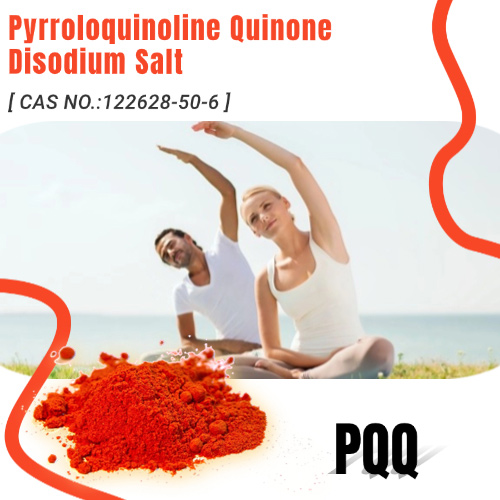
Enhance immunity, anti-aging | PQQ in the end what magical effect?
What is PQQ?
PQQ (pyrroloquinoline quinone) is a coenzyme of oxidoreductase. Its chemical form is C₁₄H₆N₂O₈. It shows excellent water solubility and stability. Its unique molecular structure gives it a high REDOX potential and incorporates the physicochemical properties of vitamin C, riboflavin and pyridoxal. PQQ shows multiple biological effects, has a good safety, has achieved remarkable results in animal nutrition, and therefore has the potential as a new feed additive.
Multiple biological functions of PQQ
1. It has a maintenance effect on the ovaries
The antioxidant properties of PQQ can protect ovarian cells from oxidative stress, and PQQ can reduce the damage of oxidative stress to ovarian cells, thus protecting ovarian health. PQQ can regulate the secretion of hormones and maintain the balance of hormone levels.
Studies have shown that appropriate supplementation of PQQ coenzyme can increase estrogen levels and reduce luteinizing hormone levels.
This has a positive effect on regulating the menstrual cycle and improving premenstrual syndrome.
Immunosuppression is a possible cause of ovarian decline. PQQ can enhance immune function and improve the body’s resistance to disease, thus helping with ovarian maintenance.
PQQ can promote the metabolism and proliferation of ovarian cells and reduce the damage caused by oxidative stress on ovarian cells.
This means that PQQ coenzyme can help women maintain normal reproductive function and slow down the aging process of the ovary.

2. Protect the liver
PQQ can prevent liver damage, this is because PQQ can reduce the low pyrulol transaminase level, so that the liver is in a long-term active state, can better discharge the toxins of the body, not only protect the health of the body, but also protect the health of the liver, but also reduce the emergence of hepatitis B, cirrhosis and other diseases, so patients with liver disease can also take PQQ. Patients with fatty liver disease can also take PQQ to protect the liver and prevent problems before they happen.
PQQ has been widely studied and found to have significant effects on the prevention and improvement of fatty liver.
Fatty liver is a common liver disease characterized by the accumulation of excessive fat in the liver tissue.
PQQ, as a powerful antioxidant, can reduce oxidative stress damage to the liver and protect liver cells from oxidative stress, thereby reducing the risk of fatty liver. Give our liver a healthy glow!

3. Improve cognition, improve brain function, and increase brain responsiveness
In February 2023, Pyrroloquinoline quinone disodium salt improves brain function in both younger and older is published in the internationally renowned journal Food & Function adults.

Conclusions: After taking PQQ for 12 weeks, the composite and verbal memory scores of all groups and the elderly population increased compared with the placebo control group. After 8 weeks of intake of PQQ, scores of cognitive flexibility, processing speed, and executive speed increased in young people, and the study demonstrated that PQQ can improve cognitive function in people of all ages.
4. Starting with the mitochondria, let the body “young” again
In May 2023, Cell Death Dis published a paper entitled Obesity impairs cardiolipin-dependent mitophagy and therapeutic intercellular mitochondrial transfer ability of mesenchymal stem cells research paper.

This study provides the first comprehensive molecular understanding of mitochondrial autophagy impairment in obesity-derived mesenchymal stem cells and demonstrates that mitochondrial health can be restored by PQQ regulation to mitigate mitochondrial autophagy impairment.
5. Improve metabolic function
In May 2023, The journal Front Mol Biosci published a study entitled “Pyrroloquinoline-quinone to reduce fat accumulation and ameliorate obesity. The review article “progression” summarizes five animal studies and two cell studies.

The results showed that PQQ inhibited fat production and reduced fat accumulation mainly by improving mitochondrial function and promoting lipid metabolism.